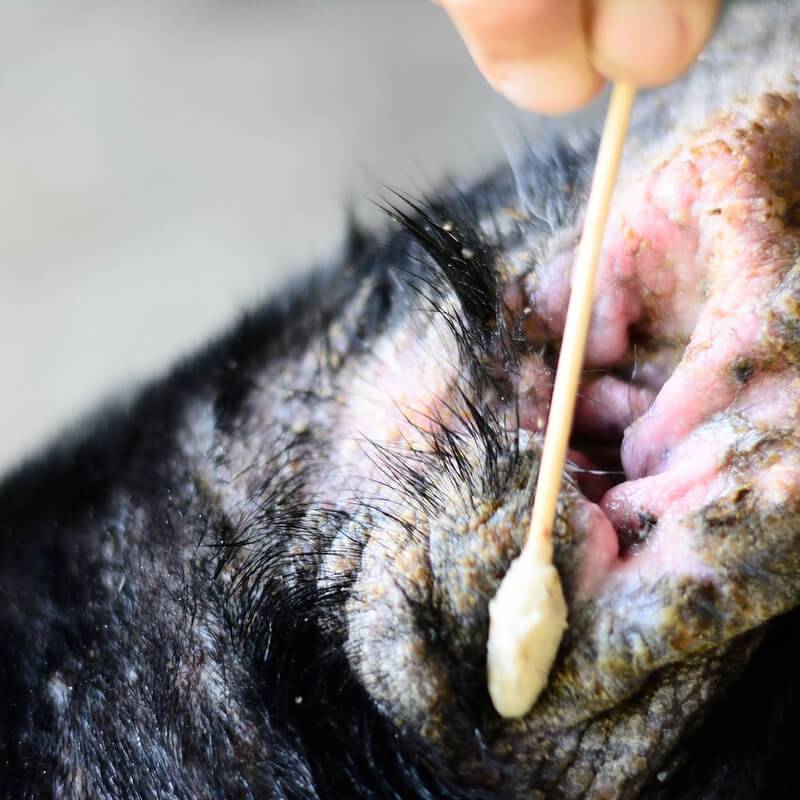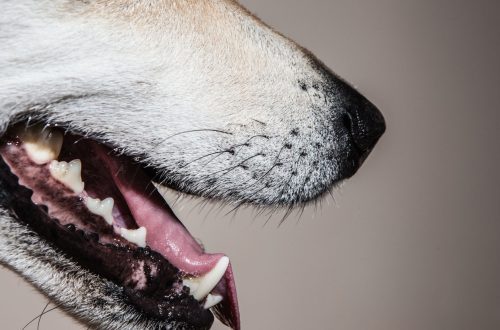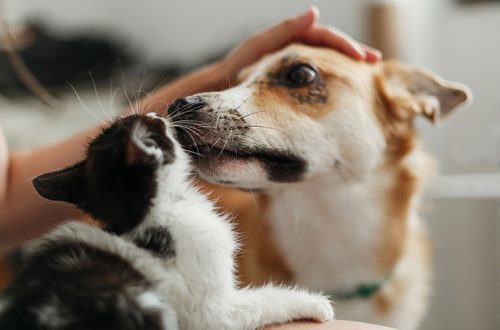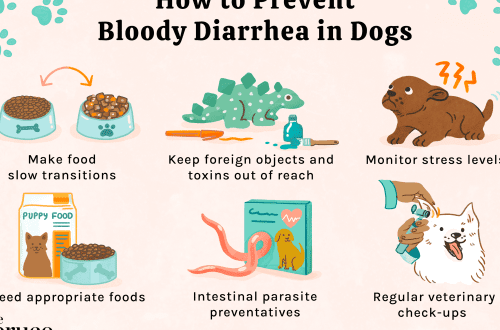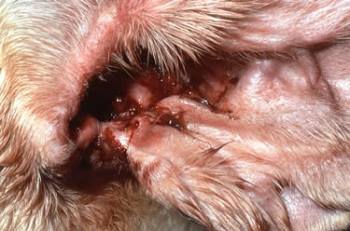
Otitis in dogs
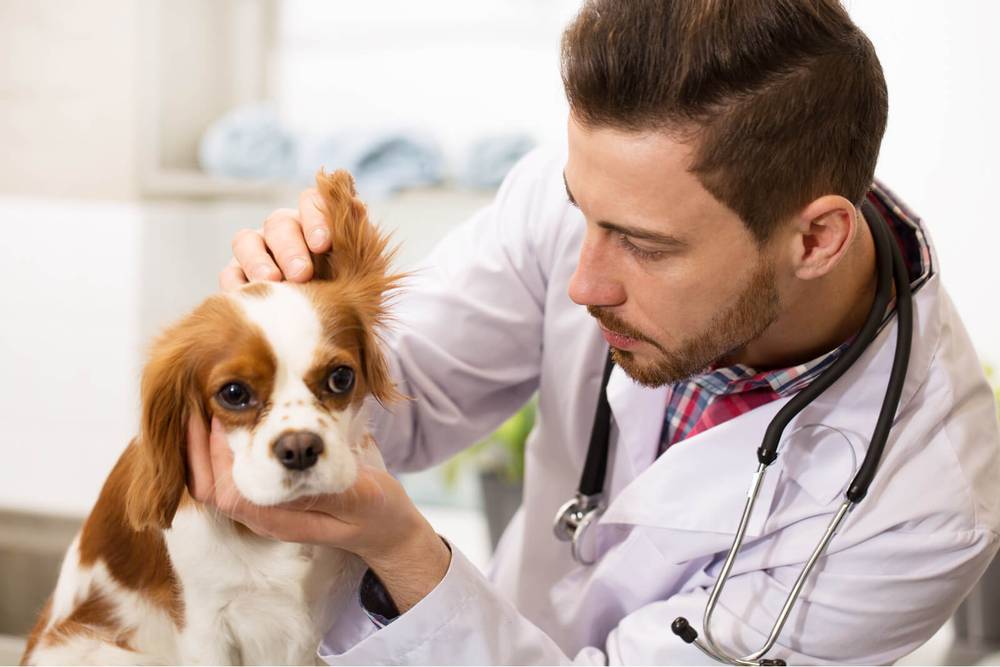
Contents
Causes of Otitis in Dogs
Veterinarians identify the following causes of otitis media in dogs.
Ear mite. Insects and parasites — most common cause of acute ear infections in dogs. Reproducing in a favorable environment, mites injure the thin skin of the ears, causing inflammation. The situation worsens if a secondary infection develops. So, against the background of inflammation, a dog develops purulent otitis media, which needs treatment, since it causes irreversible consequences.

Foreign bodycausing ear disease. During walks or games with other dogs, there is a high probability of lumps of earth, wood chips and even insects getting inside the ear. Active digging dogs and curious puppies are more likely than others to be hit by a foreign body. Unbeknownst to the owner, uninvited “guests”, stuck, block the access of air, irritate the surface of the middle ear, provoke the growth of bacteria and inflammation of the blood vessels of the organ. Thus, the dog develops otitis media, the treatment of which is important to start as soon as possible.
water penetration. This is possible even during home washing of the dog. The accumulation and stagnation of fluid in the ear contributes to the increased reproduction of pathogenic microorganisms.
Allergic otitis media in dogs. Treatment depends on the pathogen causing the allergic reaction. In the ear canal, covered with thin, receptive skin, there are many glands that produce sulfur — a protective substance that, with increased release, provokes an increase in the number of microbes and reduces immunity in the ear area.
Wool in the ears. Too thick hair in the ears can have a negative effect on the condition of the pet: the hairs inhibit the process of removing excess sulfur from the ear canal, block the access of air, irritate the surface of the inner part of the ear, provoking increased work of the ear glands.
Decreased general immunity. The resistance of the pet’s immune system can decrease seasonally, which leads to a weakening of the protective function of the skin. Due to a decrease in immunity in the ears, the process of increased reproduction of microorganisms begins, which leads to acute inflammation of the ear in a dog, and this requires treatment.
Neoplasms. As a result of diseases such as adenoma of the sebaceous gland, neoplasms grow in the ear canal, disrupt ventilation, bleed, become inflamed and fester, causing an increase in the number of pathogenic microorganisms. Neoplasms also include polyps, warts and papillomas, which, in the absence of veterinarian intervention, gradually grow, causing complications and otitis media.

Malignant tumors are fast growing and may spread to adjacent tissues. One of the most insidious types of neoplasms is carcinoma. Older dogs are more likely to be affected by malignant neoplasms.
Otitis media due to deformation of cartilage and skin folds. As a result of the increase in folds in the ear canal of dogs, gas exchange can be disturbed, which leads to an infectious process. This feature is typical for certain breeds of dogs: chow-chow, pugs, mastiffs, sharpei.
Hormonal imbalance. Various disorders of the endocrine system of a dog can provoke an excessive release of sulfur and a decrease in the immunity of the animal as a whole.
Food. Most dog diseases are aggravated due to improper diet. For example, the amount of simple sugars (simply — sweet), falling from the table to the pet, often leads to their presence in the produced earwax, which causes various infections in an increased volume, since this environment is an ideal breeding ground for pathogenic microorganisms.
Features of setting ears. Animals with hanging ears or an overly open auricle (such as Central Asian Shepherd Dogs), as well as dogs prone to allergic reactions, according to statistics, get otitis media more often than others.
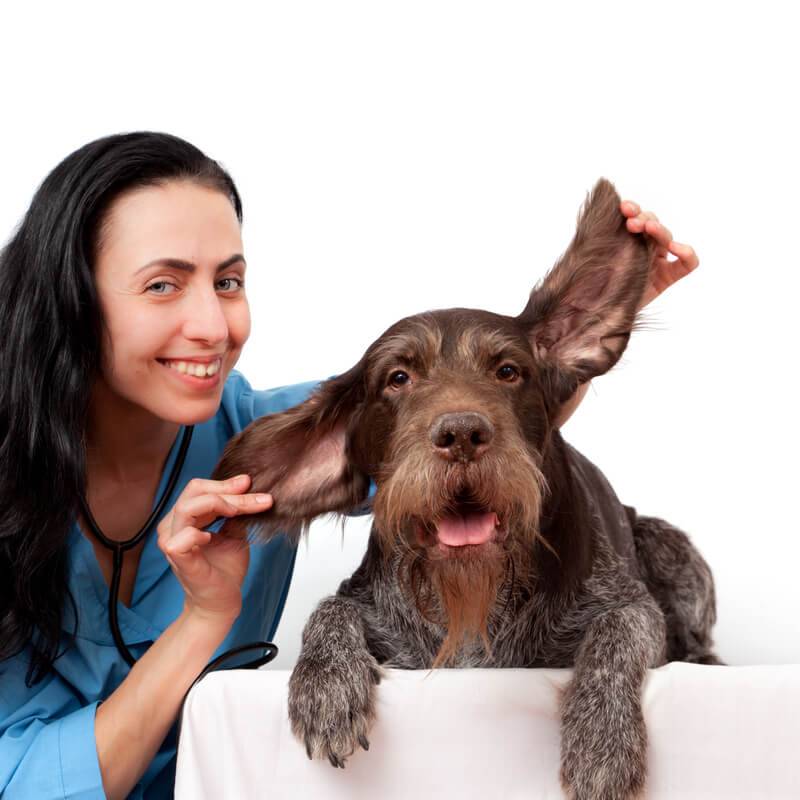
Otitis media in dogs
The developmental manifestations and signs of otitis media in dogs are varied. The degree and form of their severity depend on the immunity, the individual characteristics of the pet, the neglect of the disease process. You should contact your veterinarian if you experience the following symptoms:
- the dog shakes its head, often tilts its head, scratches its ears;
- worried, whining, does not allow to touch the head;
- noticeable purulent or bloody discharge from the external ear canal;
- hair falls out in the inner or outer part of the ears;
- ulcers, nodules, seals, redness, wounds are observed;
- an unpleasant, pungent smell comes from the ears;
- the color or shape of the ears is changed;
- the ears are hot to the touch, while their swelling is observed;
- the lymph nodes of the neck under the jaw of the animal are enlarged.

Classification of otitis media in dogs
Types of otitis media are classified by specialists according to the site of inflammation and the causes of inflammation.
Otitis externa in dogs
This type is characterized by inflammation of the auricle. The process is observed in the area between the ear canal and the eardrum of the dog.
Average otitis media
This disease is diagnosed if the lesion has passed beyond the membrane into the tympanic cavity.
Internal otitis
The disease is confirmed by fixing an extensive lesion of the internal organs of the pet’s hearing aid. The last two forms progress with inflammation of the external ear in dogs. They are not only fraught with health consequences, but also life-threatening, as they can lead to damage to the facial nerves and the penetration of infection into the brain tissue of the dog.
Diagnostics
If the owner notices that the dog’s ear is inflamed, the question naturally arises: how to treat it. Modern possibilities of veterinary science allow quickly and with sufficient accuracy to determine the cause of otitis media. Only on the basis of laboratory tests, the causative agent of the disease is detected, the most suitable treatment regimens are selected. An attempt to solve the problem on your own can cause complications, up to deafness and inflammation of the meninges, and can also lead to the death of the animal. How and how to treat otitis in a dog, the veterinarian decides.
To identify the causes of the disease, you need:
- general and biochemical blood tests to detect infection;
- cytological examination of discharge from the ear will detect a certain type of bacterial or fungal colonization or infection;
- microscopic examination of a smear, skin particles, crusts will reveal parasites and other pathogens that affect the microflora.

In certain cases, additional diagnostics may be required, which will be needed to confirm the primary cause of otitis media: thyroid examination, skin biopsy. The veterinarian may also suggest an allergen-free diet.
During the examination, it is important to pay attention to the presence of skin lesions of body parts, which, together with otitis media, may be the result of the same disease.
To complete the clinical picture, the veterinarian may prescribe an X-ray or ultrasound examination, confirming or refuting the appearance of possible neoplasms. Of considerable importance for the diagnosis are such details as nutrition, the environment and the features of walking, past or chronic diseases, and injuries. You will need to remember when the symptoms of otitis media were first noticed in a puppy or adult dog. To clarify the dates of vaccinations and treatments for parasites, a pet’s veterinary passport is required!
Treatment of otitis media in dogs
Usually, veterinarians treat otitis in dogs in the form of complex therapy, which simultaneously uses a combination of therapeutic methods and agents that act on various links in the pathogenesis of otitis. This approach has a number of directions: the fight against the external manifestations of the disease, as well as the search for the main cause of the disease for the implementation of competent treatment.
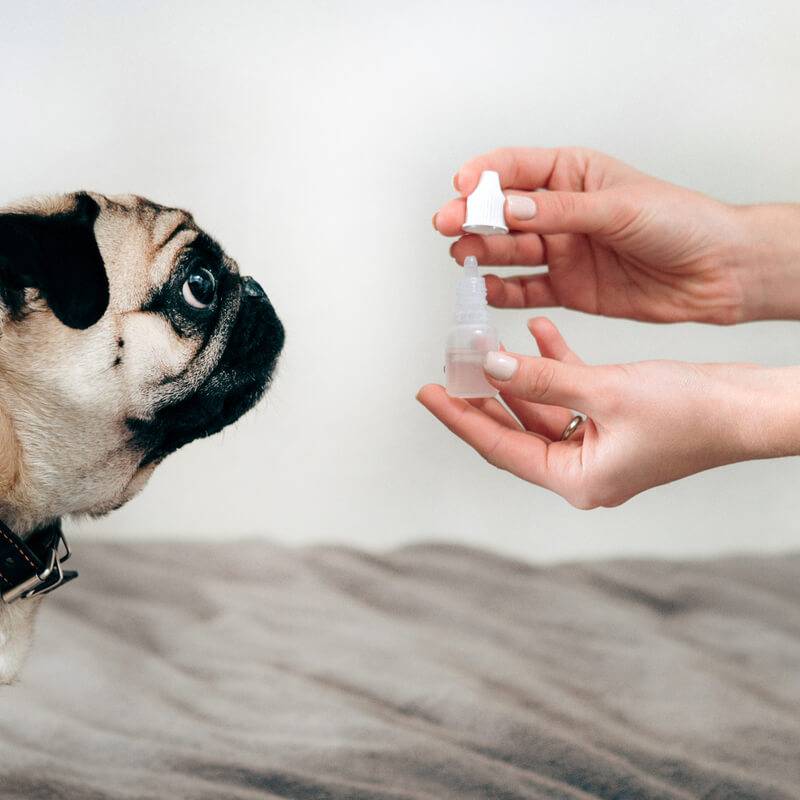
The dog is treated externally with drugs, which allows you to clean the affected area, get rid of crusts, secretions. The pet needs to remove puffiness, remove itching and pain. Depending on the type of otitis, the veterinarian will prescribe appropriate antibiotics to destroy the pathogenic microbes of the affected area. With tick-borne otitis, detoxification of the pet’s body is necessary. In addition to the important treatment of external manifestations, the main cause of the disease is being eliminated through analyzes and research. If the cause of otitis media lies in the identified foreign body, overgrowth of the ear canal, tumors, veterinarians perform surgery.
Therapy differs in the type of inflammation forms. If chronic otitis media is diagnosed in dogs, special drops are used in the treatment to prevent the growth of fungi and bacteria. Fungal otitis caused by pathogenic and opportunistic fungi will require the use of a certain type of antimicrobial drugs — antimycotic agents. Bacterial otitis in dogs is treated primarily with antibiotics, the type of which will be determined by the results of the veterinarian’s tests. When diagnosing allergic otitis in a dog, the veterinarian prescribes a diet and antihistamines.
Therefore, when determining the type of otitis in a dog, the veterinarian will tell you how to treat it, what medicines, drops or ointment to use.
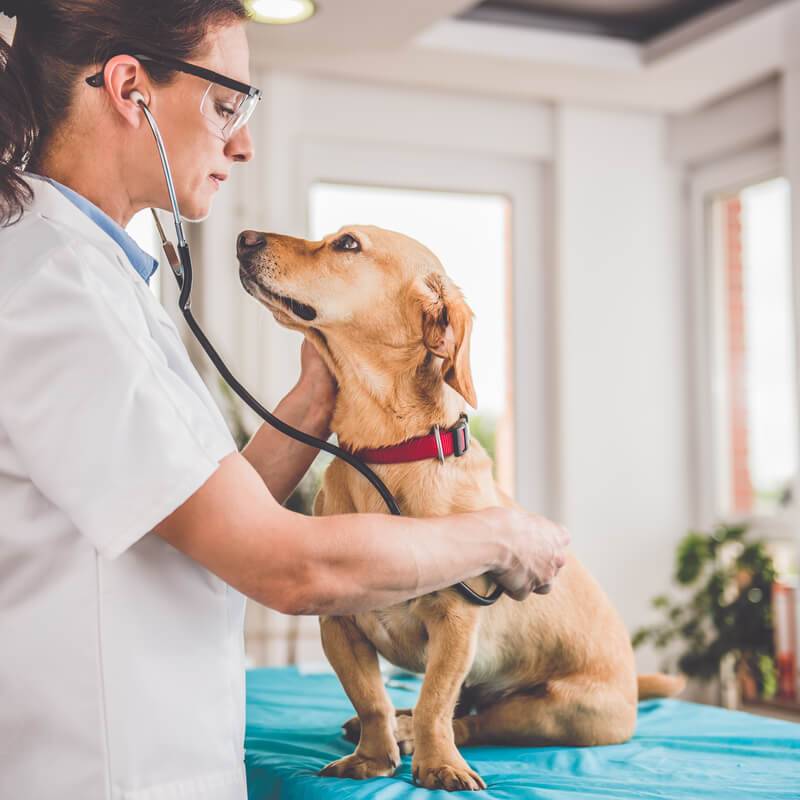
Possible complications of otitis media in dogs
An untimely appeal to a veterinarian or a sharp and lightning-fast development of an infectious disease can lead to dangerous complications, which is especially characteristic of bacterial otitis media.
Inflammation in the external auditory canal always appears first, but is not always noticed by the owner of the pet. In the absence of surgical treatment of inflammation of the outer ear, the infection passes into the middle ear, and then into the inner ear. Internal otitis in dogs is complicated by lesions of the central nervous system, which is fraught with such manifestations as convulsions, paresis, opisthotonus — the latter consists in tilting the head back and unnatural bending of the pet’s limbs.
Common complication of otitis media — complete or partial hearing loss. In complicated and advanced inflammatory processes, hearing may not be restored even after the dog has recovered. Atopic dermatitis — one of the chronic stages of the disease. A dangerous complication of otitis media is meningitis, when inflammation has reached the brain.
If otitis media is not noticed in the early stages, it becomes chronic with periodic seasonal exacerbations. An advanced disease can lead to discharge of pus from the eyes, perforation of the eardrum, partial or complete deafness of the dog, tics, and strabismus.
During periods of exacerbation, the dog experiences pain, which makes it difficult to chew food, and this in turn leads to digestive problems.
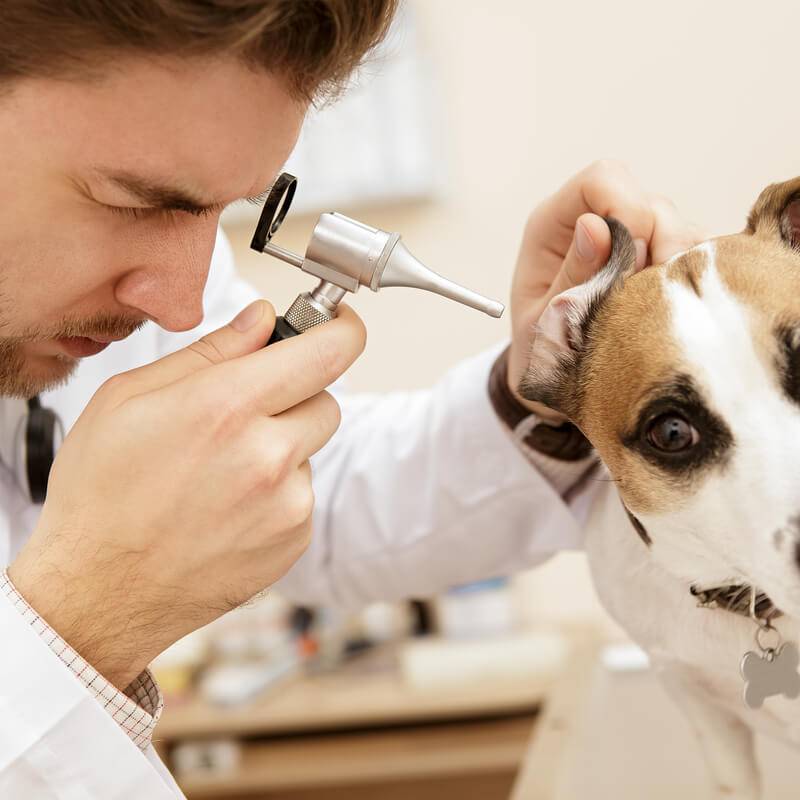
Prevention of otitis media in dogs
Checking your dog’s ears after every walk is important and can become a good habit. — A puppy should be accustomed to such procedures in a playful way. Your pet should be regularly treated for fleas and ticks. Hygienic haircuts will help get rid of increased hairiness in the ears.
Preventive cleaning of the ears should be carried out once every one to two weeks without ear sticks: use a cotton pad or special ear cleaning wipes, which can be purchased at the pet store. In their absence, chlorhexidine, hydrogen peroxide or boric acid are used at home.
For dogs with long ears, powders are sold that perfectly absorb moisture.
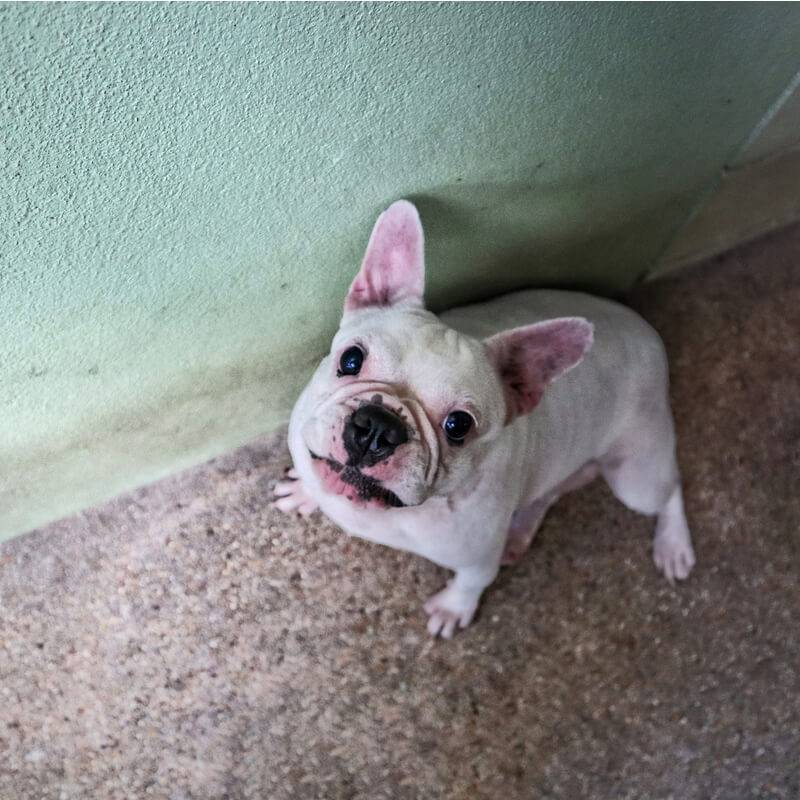
The better the immunity, the less susceptible the dog to infections and parasites. A full diet and walks will help strengthen the body’s defenses.
It is important to avoid getting water in the ears and hypothermia of the dog. After washing the pet, excess water should be removed by gently drying the ear with a swab.
It is dangerous to let the dog go outside alone: in addition to possible injuries, there is a possibility of infection from other animals with ear mites, fungal or other infections.
Attentive attitude to the health of your dog in the event of otitis media and a timely visit to the veterinary clinic will be the key to the health of the ears and the whole body of your beloved pet.
The article is not a call to action!
For a more detailed study of the problem, we recommend contacting a specialist.
Ask the vet
28 May 2020
Updated: January 13, 2021




